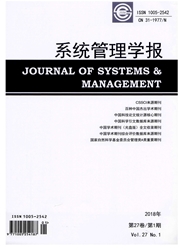

 中文摘要:
中文摘要:
使用复杂网络与社会网络方法技术对S大学D学院1998~2009年教师科研合著网络进行静态与动态特征分析。从整体、层次和个体等3个层面进行静态特征分析,发现整个网络紧凑性不太高、不具有小世界特征、有明显社群结构和核心区域,并挖掘出重要的顶点和边;通过对度特征、连通性和核心区域的演化进行动态分析,发现网络演化经历了4个阶段:网络密度和同配性降低、网络效率增加但不高,网络核心成员稳定。研究表明:到2009年,D学院学科群已经初步形成,但各系不平衡,新核心成员涌现不足。结合具体情境进行组织网络分析,能更深入地揭示成员互动特征,为管理提供有效的实证依据。
 英文摘要:
英文摘要:
Static and dynamic structural features of scientific co-authorship network of D college, S university during 1998 to 2009 were analyzed using complex and social network methods. Static analysis of whole and hierarchical level shows that this network is not a small world with low compactedness and multiple community structure. High prominence nodes and critical edges were discovered at individual level. Dynamic analysis of degree characteristics, connectedness and core region indicates that there are four stages of network evolution, with decreasing network density and assortative mixing, increasing but still low network efficiency and stable core nodes. The results imply that research group of D college has been formed with imbalance among departments and lack of emerging faculty members. In general, analysis of organizational network within real contexts may reveal the interactive characteristic among faculty members and provide empirical evidences for management practice.
 同期刊论文项目
同期刊论文项目
 同项目期刊论文
同项目期刊论文
 A SUFFICIENT CONDITION FOR CLASSIFIED NETWORKS TO POSSESS COMPLEX NETWORK FEATURE, NETWORKS AND HETE
A SUFFICIENT CONDITION FOR CLASSIFIED NETWORKS TO POSSESS COMPLEX NETWORK FEATURE, NETWORKS AND HETE 期刊信息
期刊信息
